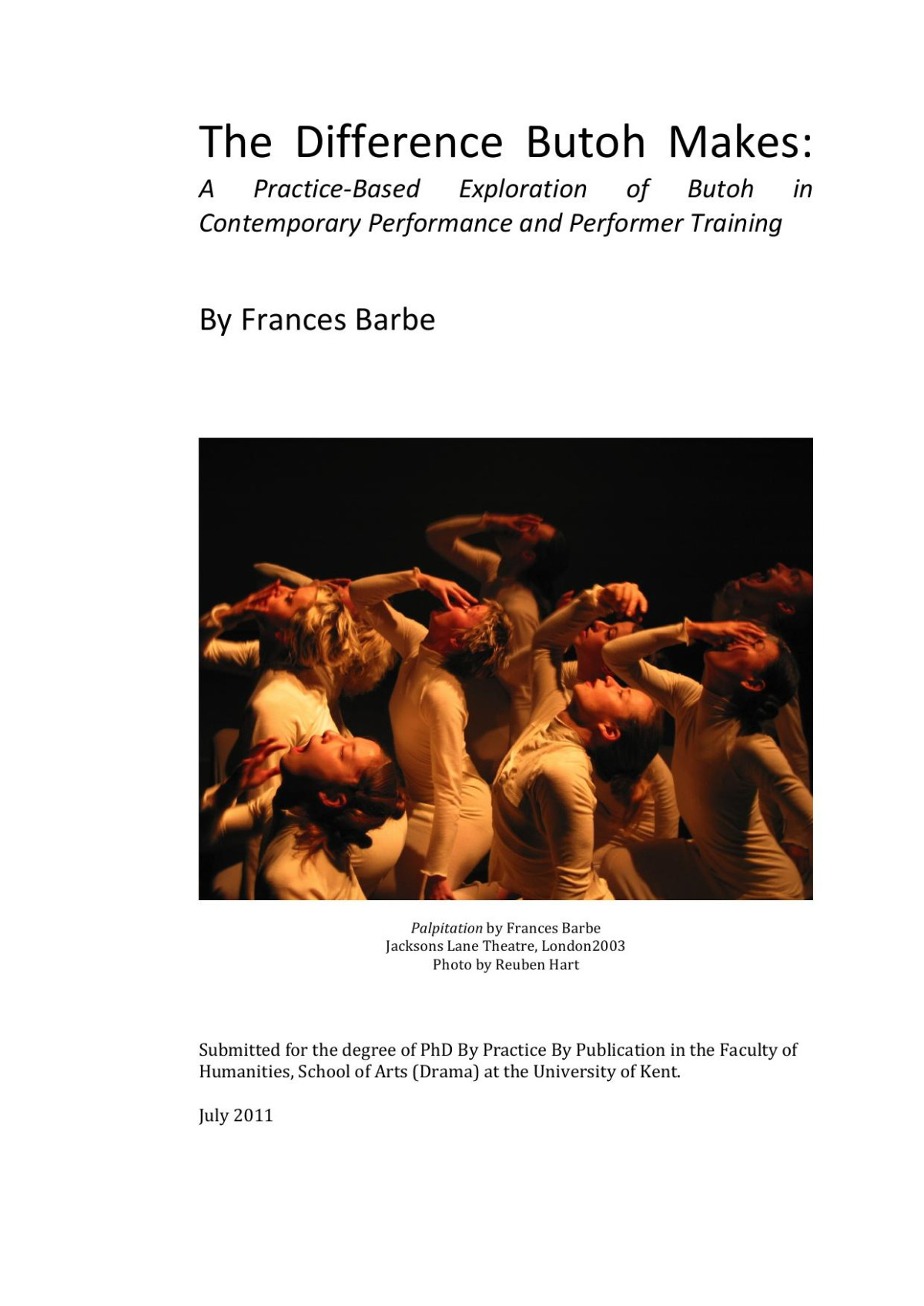

Most ebook files are in PDF format, so you can easily read them using various software such as Foxit Reader or directly on the Google Chrome browser.
Some ebook files are released by publishers in other formats such as .awz, .mobi, .epub, .fb2, etc. You may need to install specific software to read these formats on mobile/PC, such as Calibre.
Please read the tutorial at this link: https://ebookbell.com/faq
We offer FREE conversion to the popular formats you request; however, this may take some time. Therefore, right after payment, please email us, and we will try to provide the service as quickly as possible.
For some exceptional file formats or broken links (if any), please refrain from opening any disputes. Instead, email us first, and we will try to assist within a maximum of 6 hours.
EbookBell Team

4.1
80 reviewsThe Difference Butoh Makes: A Practice-Based Exploration of Butoh in Contemporary Performance and Performer Training By Frances Barbe. Phd By Practice By Publication. Faculty of Humanities, School of Arts - Drama, University of Kent, UK 2011. ABSTRACT My performance works Fine Bone China, Palpitation and Chimaera form a body of work drawing on Japanese butoh. Each production emphasises a different aspect of butoh, allowing for a study of the difference butoh makes to the process of creation and performance. Fine Bone China explores the interaction between physical score and psychophysical subscore, and the distinction between “figure” and “character”. The group work, Palpitation, challenged performers with extreme reduction or distillation (stillness, simplicity and slow motion) and emphasised kinaesthetic listening and response in ensemble work. Chimaera focused on the transformation and objectification of the butoh body. Alongside these performances, original training methodologies developed that contribute to knowledge and understanding of butoh and performer training. Examples of performance and training practice are presented on DVD and in photo galleries. The written thesis reflects critically on the process of making this body of work, and culminates in a consideration of the butoh body as an objectified, marionette-like body, drawing on the famous historical essays of Edward Gordon Craig and Heinrich von Kleist, and terms such as the “dead body” from butoh and the “lived body” from phenomenology are unraveled. The thesis locates the body of work within the wider context of global butoh and contemporary performance. It does not seek a reductive definition of butoh or ask, “what is butoh?” Instead the thesis considers what values are discernible in butoh or butoh-based work? What demands does it place on the performer and on the spectator? What is distinctive about butoh dramaturgy? How do butoh artists train or prepare for butoh, given that butoh is not a technique or a style of performance? What contribution (difference) has butoh made to late twentieth century dance and performance? What aspects of butoh are transferable and relevant to current, contemporary performance and why have western performers turned to butoh to complement their work?